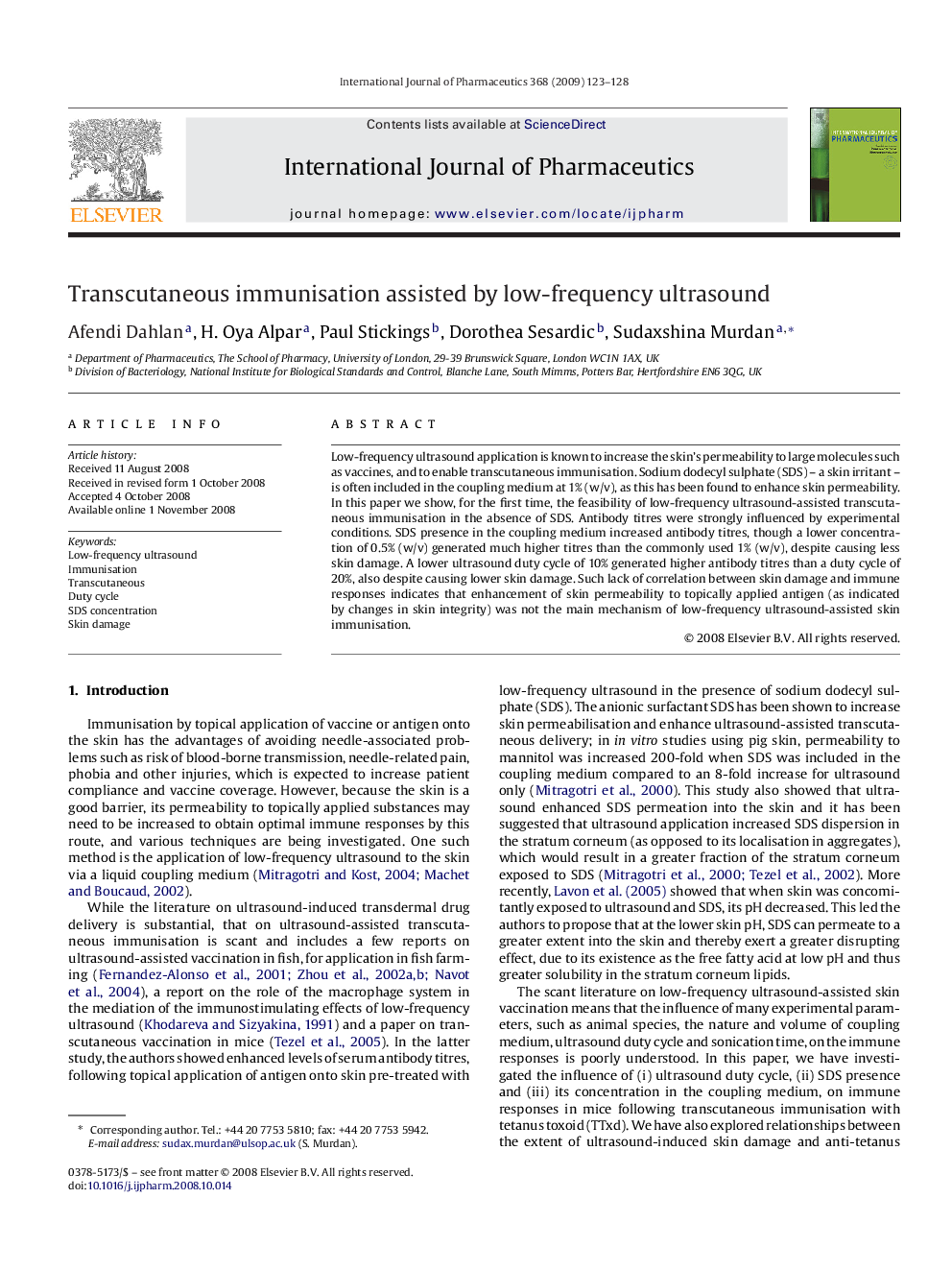| کد مقاله | کد نشریه | سال انتشار | مقاله انگلیسی | نسخه تمام متن |
|---|---|---|---|---|
| 2504982 | 1557477 | 2009 | 6 صفحه PDF | دانلود رایگان |

Low-frequency ultrasound application is known to increase the skin's permeability to large molecules such as vaccines, and to enable transcutaneous immunisation. Sodium dodecyl sulphate (SDS) – a skin irritant – is often included in the coupling medium at 1% (w/v), as this has been found to enhance skin permeability. In this paper we show, for the first time, the feasibility of low-frequency ultrasound-assisted transcutaneous immunisation in the absence of SDS. Antibody titres were strongly influenced by experimental conditions. SDS presence in the coupling medium increased antibody titres, though a lower concentration of 0.5% (w/v) generated much higher titres than the commonly used 1% (w/v), despite causing less skin damage. A lower ultrasound duty cycle of 10% generated higher antibody titres than a duty cycle of 20%, also despite causing lower skin damage. Such lack of correlation between skin damage and immune responses indicates that enhancement of skin permeability to topically applied antigen (as indicated by changes in skin integrity) was not the main mechanism of low-frequency ultrasound-assisted skin immunisation.
Journal: International Journal of Pharmaceutics - Volume 368, Issues 1–2, 23 February 2009, Pages 123–128